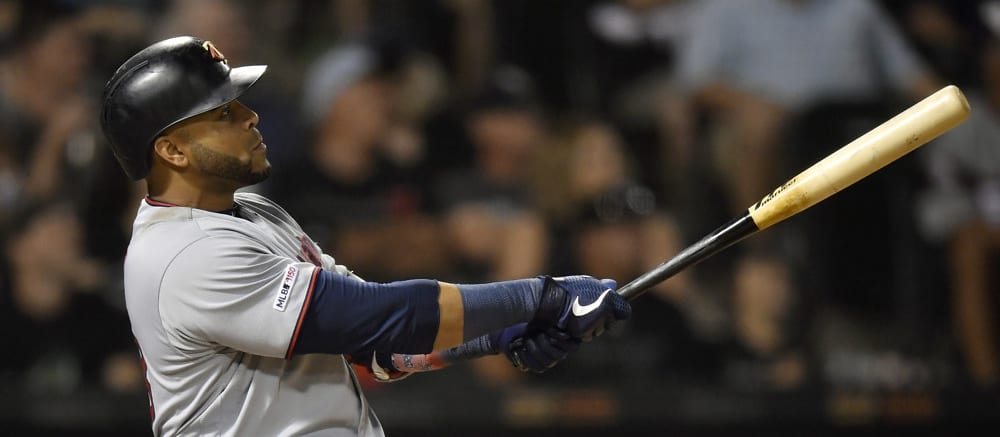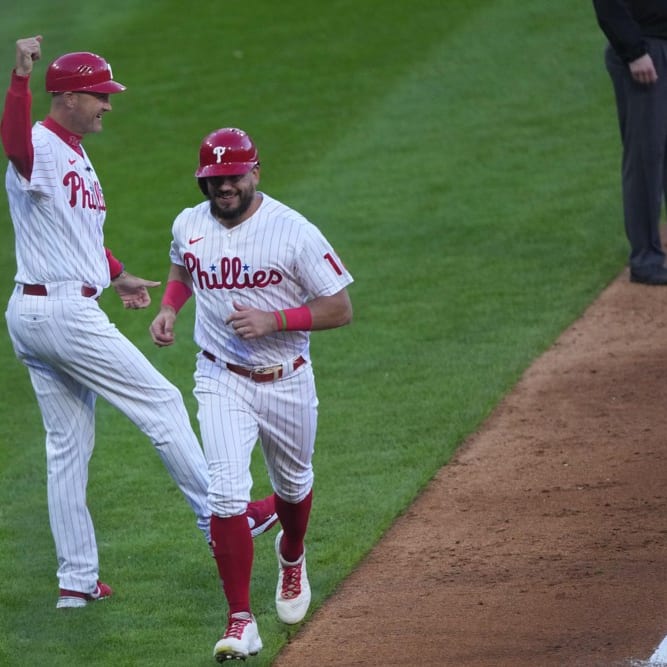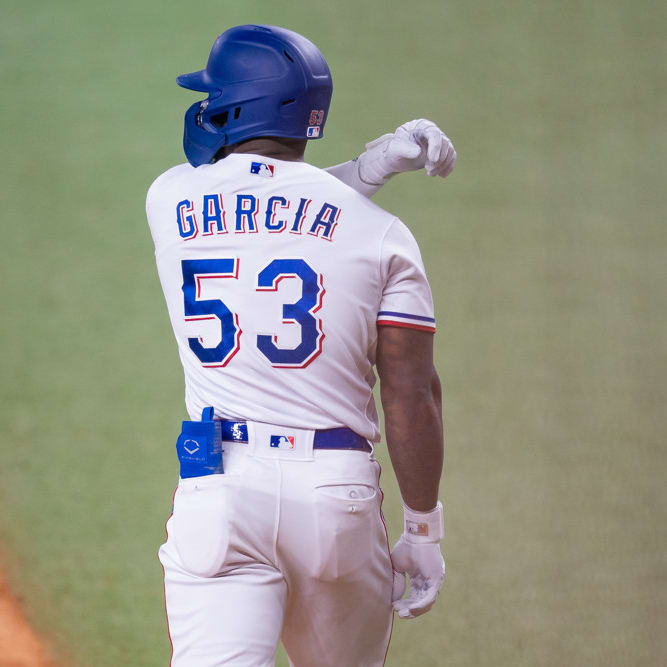This article is part of our The Z Files series.
I got a fever and the only prescription is more best ball points leagues. I know, to traditional rotisserie players, points leagues are blasphemy. However, there is significant allure to drafting a team and once the last player is on your roster, you're done.
Granted, one format, the NFBC Cutline includes a pair of FAAB periods which can be laborious with multiple teams, but it's still nothing compared to the weekly management of a standard rotisserie roster.
Other popular best ball formats include the new NFBC Best Ball 12, featuring 12-team double ups and pay top-3 and the BestBall10 contests. The BestBall10 isn't technically run by the NFBC, but it uses the same scoring and is under the same company umbrella. Fantrax also offers several best ball options, including double ups and pay top-2.
The Cutline and NFBC 12 are higher stakes contests with entries over $100. Fantrax also has options in that range. BestBall10 and Fantrax feature very low entry points, designed for the draftnik on a budget. The rules and payouts for each are available on their respective websites.
For those unfamiliar with the format, players are awarded points based on specific events (hits, homers, wins, saves, etc.). At the end of the week, the computer determines your optimal lineup and you're credited with the corresponding number of points.
The three formats under the NFBC umbrella use a scoring system incorporating the stats from standard 5x5 rotisserie scoring. It's a unique method designed to keep the player rankings
I got a fever and the only prescription is more best ball points leagues. I know, to traditional rotisserie players, points leagues are blasphemy. However, there is significant allure to drafting a team and once the last player is on your roster, you're done.
Granted, one format, the NFBC Cutline includes a pair of FAAB periods which can be laborious with multiple teams, but it's still nothing compared to the weekly management of a standard rotisserie roster.
Other popular best ball formats include the new NFBC Best Ball 12, featuring 12-team double ups and pay top-3 and the BestBall10 contests. The BestBall10 isn't technically run by the NFBC, but it uses the same scoring and is under the same company umbrella. Fantrax also offers several best ball options, including double ups and pay top-2.
The Cutline and NFBC 12 are higher stakes contests with entries over $100. Fantrax also has options in that range. BestBall10 and Fantrax feature very low entry points, designed for the draftnik on a budget. The rules and payouts for each are available on their respective websites.
For those unfamiliar with the format, players are awarded points based on specific events (hits, homers, wins, saves, etc.). At the end of the week, the computer determines your optimal lineup and you're credited with the corresponding number of points.
The three formats under the NFBC umbrella use a scoring system incorporating the stats from standard 5x5 rotisserie scoring. It's a unique method designed to keep the player rankings somewhat close to 5x5. Fantrax uses a much more standard system, at least to those versed in points leagues.
As is the case with all points leagues, understanding how to rank is paramount. However, at some point, it's advisable to stray from rankings and embrace player variance since you're looking to take advantage of reasons why a player may excel in a given week – more on this later.
The key to points scoring is determining useful points. The very worst player contributes points, but they're useless since everyone has them. Therefore, rankings should not just be a top-to-bottom list of projected points, but rather ordering by useful points, with the contribution from the worst player in each pool subtracted from the raw projected total.
In today's game, with so many players eligible at multiple positions, there are only three pools: catcher, non-catcher and pitcher. The adjustment entails subtracting the worst drafted player from each of these three pools. It should be noted Fantrax assigns a single position to every batter, but using just two hitting pools is fine.
For example, in the NFBC 12, there are two catchers per team, yielding 24 drafted backstops. The points from the 24th-highest catcher are taken away from all the catchers.
In the Cutline, there are 10 teams with nine pitching spots. As such, the points from the 90th-best pitcher are removed from all hurlers.
This is done for all three pools and the rankings incorporate the adjusted points for all three pools.
The ramifications after proper rankings are huge and may even lead to difficult drafting if most of the room fails to make the changes. There are two main repercussions. First, catchers jump way up. Second, the relative difference between hitters and pitchers changes.
With regards to pitching, draft strategies will be discussed later, but in both scoring systems adjusted points propel pitchers up the overall rankings. In the NFBC games, the final rankings are close to rotisserie rankings, so batters still occupy the top spots. However, in Fantrax, pitchers dominate the top of the list.
What follows are some tips for best ball drafting. As always, your team, your call, but I've enjoyed a lot of success with these approaches.
Catchers
From a mathematical and practical perspective, I want the top backstop on the board. In roto leagues, this can be a detriment to roster building. In best ball, it affords a huge edge since you'll almost assuredly lead the league at the position, barring an injury. The key is, with the best ball nature of scoring, you're not sacrificing too much elsewhere to attain the edge. Essentially, the edge garnered from J.T. Realmuto is greater than what you may lose at another position by not drafting that position with an early pick.
One of the challenges with this gambit is not getting fooled by the perceived "value" of other catchers remaining high on your list. Since the room likely does not make the useful points adjustment, after you grab your first backstop, the top of your rankings will be awash with more catchers, causing "why didn't I wait and grab one of these guy" frustration. Again, the key is the nature of best ball. Even the best at the non-catcher spots won't make your lineup every week. If you lock in solid backups, you won't fall behind everyone else at the other spots. But, if you have the top catcher, you likely have them all beat. Ignore perceived lost value and bully the top receiver.
Starting Pitching
Here is where it gets hairy, especially on Fantrax. In both cases, if the room is using raw points, your rankings will soon have a preponderance of arms at the top. The key is cleverly knowing when to skip over the top-rated hurlers for a bat. If you stick to the rankings, your staff will rock, but the sticks will be weak. Maybe that seems OK, the pitching will carry the squad. The issue is this mitigates the beauty of best ball where you're looking for a lower-ranked pitcher to have a pair of soft starts and jump into your active lineup that week. It requires experience and reading the room, but my rule of thumb is never taking more than two starting pitchers with consecutive picks, unless I'm close to the turn and know I'll be taking a batter with the comeback selection. This builds up pitching while not ignoring bats.
Not all formats have a nine-man active staff, but for those that do, my target is four arms likely to be active every week, two spots for closers and three for lesser hurlers taking advantage of good matchups. This usually entails hitting arms early and hard, which is also dictated by proper rankings, then laying off for a bit while fortifying bats before returning and pounding away at starters on good teams or favorable home parks to maximize the opportunities they have a productive week.
Closers
This could be the area in which I differ from the masses the most. Others see a volatile position, hence want to avoid it. I see a subset where points are clustered the weeks in which a closer posts multiple saves. I'd rather draft zero or four-plus closers, the idea being I want one or two of my closers to pop that week. If they all stagger their high-scoring weeks, someone from the group is always in my active lineup. My focus is on the top end, those most likely to garner their teams' first and last saves. Admittedly, the inventory for pulling it off this season is limited. It pretty much requires Liam Hendriks, and then three from Josh Hader, Kirby Yates, Aroldis Chapman, Ryan Pressly, Brad Hand, Raisel Iglesias and Kenley Jansen. The problem is everyone past Hendriks is riskier than normal in this tier, and Hendriks himself has only been "the guy" for half of 2019 and the abbreviated 2020 campaign. Still, stacking closers is my Plan A.
Multiple Eligibility Players
From the keyboard of Lord Obvious, multiple-eligibility players (MEP) are gold in best ball since each serves as an extra roster spot. Ample players with eligibility at more than one spot frees up extra pitching darts later in the draft. The question is how far to jump one up the ranking list? This is another one of those feel things acquired via experience, but if the room is actively pursuing the MEPs, I'll wait and take advantage of the "better" players they're leaving behind. Often, the second and third-tier MEPs are passed over since many of the other teams already have some on their roster. If the room doesn't seem to be reaching for them, I'll be the aggressor, hoping later on everyone else reaches for the lesser options.
Utility-Only
This is perhaps the toughest rule to follow, but unless the discount is steep, I'll pass. The worry is someone from my reserves will have a great week but be squeezed out of a spot. Maybe they outpoint Nelson Cruz one week, but that means my relatively high pick on Cruz was wasted. You want each player to slot into as many roster spots as possible. By definition, a utility-only player is limited to just one spot. That said, if the room is overlooking someone like J.D. Martinez who is likely to gain eligibility in the outfield, I'll jump all over that discount.
Hitter Reserves
While this depends on draft flow and player availability, I'll back up my last position covered first. This is one of those strategies that should be obvious, but it isn't universally deployed. In a recent BestBall10, I waited a long time before drafting my first player eligible at second base. I knew there were a bunch of late options, so I opted to be patient then pound the keystone with reserves, hoping someone rolls Yahtzee every week. I ended up with Kolten Wong, Cesar Hernandez and Jonathan Schoop. In full disclosure, I nabbed Schoop right after he signed so I caught a break, but even so, I'll take that trio at my weakest position in a 12-team league. For what it's worth, the BestBall10 format uses a smaller lineup, with no corner or middle.
The other chief component of strong reserves is embracing variance. This requires straying from the rankings, since rankings account for all projected performance.
Someone like Ryan McMahon crushes at home but suffers on the road and his ranking reflects it. Ignoring the MEP bonus, I want batters like McMahon since there will be a few weeks he has six or seven games at home, and even those where he has four are potentially useful. It doesn't have to be just Coors Field, I'll focus on hitters on productive teams in good hitting venues.
Another angle is platoon splits. Obviously, lefty swingers are preferred since they'll enjoy more weeks facing a preponderance of right-handed pitching, boosting their performance.
Pitcher Reserves
Again, the operative phrase is embracing variance. This was already referenced, but starting pitchers in favorable home parks are more likely to not lose points for allowing hits and runs. Pitchers on better teams have increased odds to secure a win. Streaming two-start pitchers is somewhat overrated since a guy with 32 starts only has a double-dip six times a season, but avoiding pitchers on teams known to be using a six-man rotation increases the chances of someone having a two-start week.
There you have it, my tried-and-true tricks in best ball leagues. I hope to see you in a draft room soon. All I ask is you leave me the best catcher and top closers, please and thanks.










